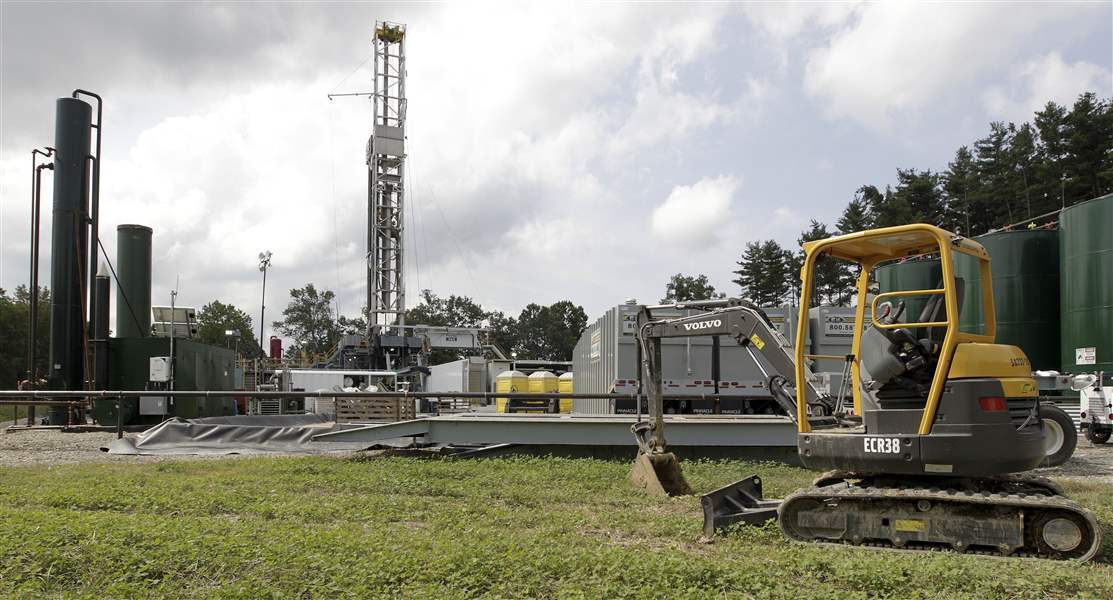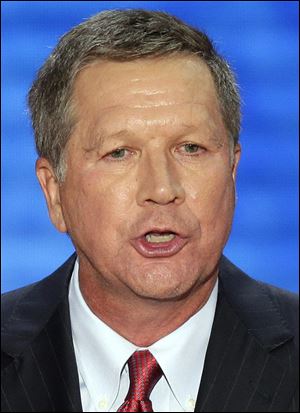
Critics find shale gas plan too lax
Opponents say proposed House bill could cost Ohio, not fund it
1/16/2014
ASSOCIATED PRESS

Kasich.
COLUMBUS — An industry-backed proposal to raise the tax on shale oil and natural gas drilling in Ohio while providing for other industry tax breaks could actually drain resources from the state, critics argued Wednesday.
Expected new revenue from the higher tax is uncertain, particularly since it would be partially offset by other breaks, raising doubt enough would be available to cover the costs of regulating the burgeoning industry and capping abandoned wells.
“This is a costly bill for the state,” said Wendy Patton, senior project director for the left-leaning Policy Matters Ohio. “That’s one reason the severance tax rates need to be higher than the 1 percent of House Bill 375. ... We’ve got a subsidy for the oil and gas industry that’s really quite large.”
She dismissed suggestions from the industry that drillers would be less likely to take risks in Ohio if the state raises the severance tax beyond what is proposed in its bill.
“A severance tax more like that of other producing states will not stop development if the resource is here,” Ms. Patton said. “In 2010, West Virginia, with a severance tax rate of 5 percent on oil and gas, led the country in the number of new gas wells drilled, and despite the lack of a severance tax, Pennsylvania drilled less than half the number of new wells as West Virginia.”
The bill, sponsored by Rep. Matt Huffman (R., Lima), would phase in a new rate at 1 percent of a well’s net revenue during the first five years of operation. The rate would climb to 2 percent during a well’s productive years before returning to 1 percent as the well’s production slows.
The state now charges 3 cents per 1,000 cubic feet of natural gas and 20 cents per barrel for oil, which Gov. John Kasich has blasted as unreasonably low. He has called for a phased-in rate of 4 percent for both with the revenue generated going dollar for dollar to another income tax cut for all Ohioans.
But state Rep. Terry Boose (R., Norwalk) countered that plenty of states and other countries have shale and natural gas pockets that are also now viable because of the new technology of horizontal drilling.
“Here we have an industry that can bring jobs to Ohio and is bringing jobs to Ohio,” he said. “I’ve never heard of raising taxes as a way of bringing jobs to any area. ... You say we’re lower than everybody else. Yeah! That’s a good thing.”
The bill would require revenue generated by the higher tax to first pay for state regulation of the industry, cap abandoned wells, reclaim land, and offset income and business tax cuts for well owners and drillers before any money would make its way into across-the-board income tax cuts.
Legislative and state analyses of the bill have been unable to put dollar figures on how much the higher tax might raise, citing too many uncertainties. The industry has predicted about $2 billion in new revenue over 10 years compared to $2.8 billion under Mr. Kasich’s higher-rate proposal.
Both proposals are designed to take advantage of hydraulic fracturing, or “fracking,” of wells that are largely in southeastern Ohio. The controversial technology uses chemically treated fluids at high pressure to fracture shale to release the oil and gas trapped within.
Contact Jim Provance at: jprovance@theblade.com or 614-221-0496.